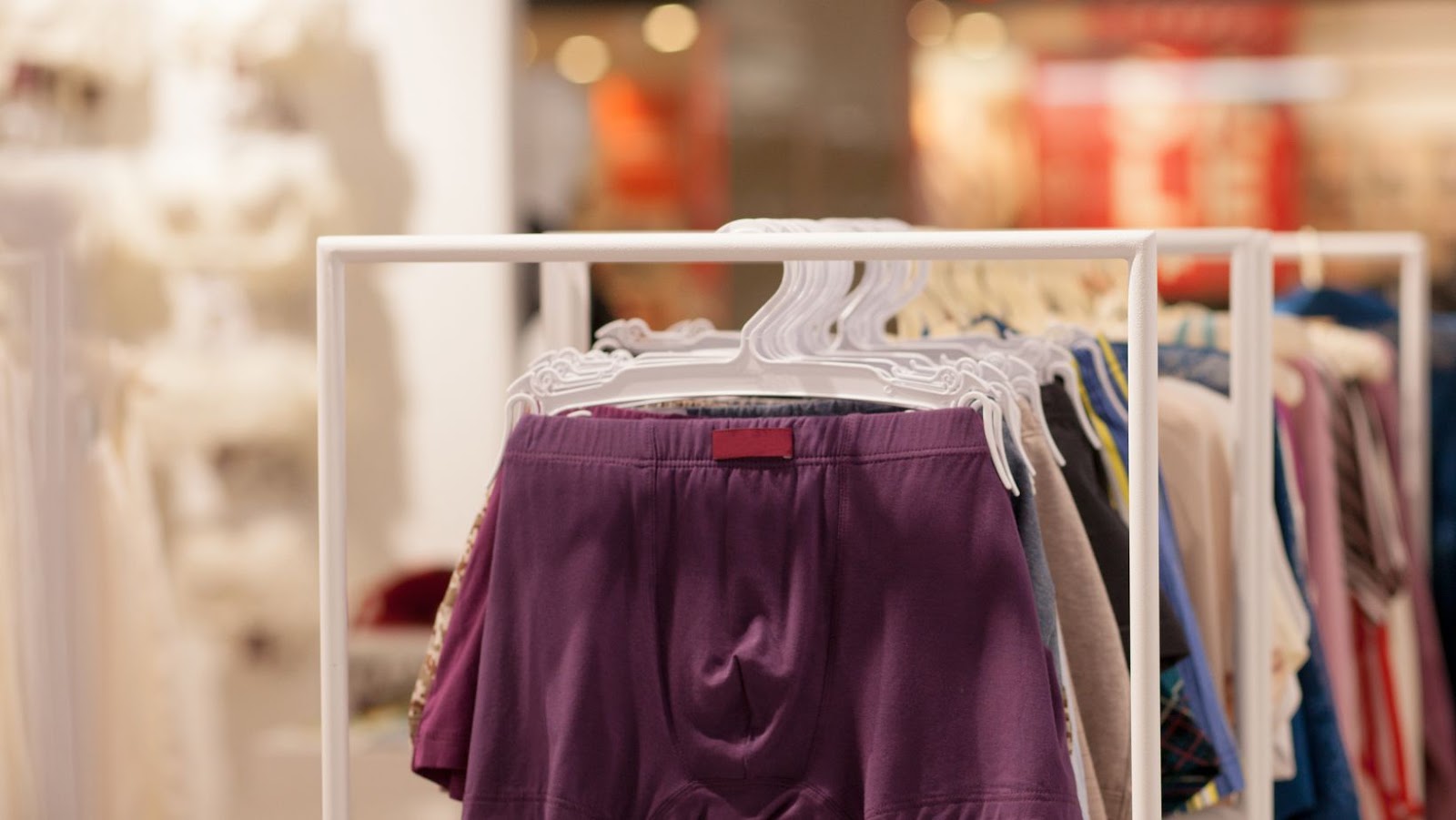Introduction
Boxers are common underwear for men. However, they may not be the best fit when worn underneath swim trunks. The answer to whether or not you should wear boxers under swim trunks depends on personal preference and the type of swim trunks you have.
If your swim trunks have a built-in mesh lining or briefs, then wearing boxers is unnecessary. However, if your swim trunks lack lining or are loose-fitting, then boxers can provide extra support and prevent chafing.
Wearing cotton boxers while swimming may lead to discomfort due to water retention, but synthetic blends can help prevent this issue. Additionally, boxer briefs may offer a better fit than traditional boxers for physical activity in water.
Pro Tip: Before deciding whether to wear boxers under swim trunks, consider factors such as comfort, support and the type of swimwear being worn.
Understanding Swim Trunks
To understand swim trunks with types of swim trunks and materials used for swim trunks as solutions briefly, let’s dive into the details. Whether you’re getting ready for your first trip to the beach or just looking to update your swimwear collection, knowing about the various types of swim trunks and materials used for swim trunks can help make your decision easier.
Types of Swim Trunks
Swim Trunk Variations
The diverse types of swim trunks available in the market can be overwhelming. To make an informed decision, one must understand the different swim trunk variations.
Table for Swim Trunk Types
Below is a table highlighting various swim trunk types available in the market along with their distinguishing features.
| Swim Trunk Type | Features |
| Boardshorts | Longer length, loose fit |
| Trunks | Shorter lengths, snug fits |
| Jammers | Tight-fitting, streamlined design |
| Square Leg | Higher cuts through legs and slimmer fit |
Additional Details on Swim Trunk Variations
Each type of swim trunk variation has unique features that serve different swimming and fashion purposes. Boardshorts provide more coverage and are excellent for surfing or beach volleyball. Trunks are ideal for recreational swimming, while jammers are perfect for competitive swimmers looking to reduce drag. Square leg swimsuits offer both functionality and style.
Olympic gold medalist Michael Phelps prefers jammers because they reduce friction in the water, enabling him to break records effortlessly.
Swim trunks are made from various materials, but let’s be real – the only thing that matters is whether they dry quickly or if you’ll be stuck feeling like a soggy potato all day.
Materials Used for Swim Trunks
Swim trunks are designed to make you feel comfortable in the pool or at the beach. The selection of fabric is important as it affects both comfort and fit. Here are six different materials commonly used in making swim trunks:
- Polyester – lightweight, quick-dry, and durable.
- Nylon – stretchy, durable, and lightweight.
- Spandex – super stretchy, form-fitting and allows a full range of motion.
- Microfiber – soft, lightweight, and dries quickly.
- Cotton – natural fiber that is breathable but not ideal for water activities.
- Mesh – allows for water drainage and breathability.
Notably, some swimwear incorporates a combination of these fabrics to ensure greater durability or enhance flexibility. Hence, it’s essential to know your preferred fabric type beforehand.
Boxers and swim trunks: the ultimate battle between comfort and functionality.
Do you wear boxers under swim trunks
To make the most of your swimming experience, you need to be comfortable in your swimwear. In order to help you in this regard, this section called ‘Boxers and Swim Trunks’ with sub-sections ‘Pros and Cons of Wearing Boxers Under Swim Trunks’ and ‘Alternatives to Wearing Boxers Under Swim Trunks’ is presented.
Pros and Cons of Wearing Boxers Under Swim Trunks
When wearing swim trunks, the decision of whether to wear boxers underneath may have its own set of advantages and disadvantages. Venturing into this topic, we explore how wearing underwear beneath swimwear affects comfort and hygiene.
- Pros: For those who feel more comfortable having extra coverage or support, wearing boxers under swim trunks can provide added security. The underwear can help prevent any unexpected slips or accidents while swimming or engaging in water sports.
- Cons: Wearing boxers under swim trunks can lead to discomfort, chafing and skin irritation due to dampness caused by the combination of fabrics. In addition, if not dried properly between uses, bacteria and germs can accumulate around the groin area leading to infections.
- Hygiene Tips: If one prefers wearing boxers under swimwear, it is crucial to choose a quick-dry fabric for both pieces. After use, the garments should be washed separately using warm water and mild detergent and left to air-dry away from direct sunlight.
When deciding on whether or not to wear boxers under swim trunks, several factors such as personal preferences, comfort level and hygiene must be considered.
It has been noted that famous boxer Muhammad Ali used to wear his boxing trunks underneath his swimming trunks. While some speculate he did so for added security during his ocean swims, others also suggest that Ali simply preferred the style as it was a practical solution while travelling without access to laundry facilities.
You could always just go commando and let the waves crash where they may.
Alternatives to Wearing Boxers Under Swim Trunks
When it comes to swimming, many men prefer to wear swim trunks over other options. However, some may wonder what alternatives exist to wearing boxers under swim trunks. Here are a few options to take into account:
- Compression Shorts – These snug-fitting shorts help with support and reduce chafing. They also provide an extra layer of protection.
- Jammers – Jammers are tight-fitting shorts made from materials like nylon or spandex that provide sun protection and freedom of movement.
- Speedo – Although Speedos may not be everyone’s preferred style, they can provide optimal comfort for swimming as they are designed specifically for aquatic activities.
It is important to note that the alternative options mentioned above can vary in price and style, and the choice ultimately depends on personal preference.
For those who prioritize uniqueness, there is also the option of customized swimwear. Some brands offer tailored options that allow you to customize your suit’s fit, design, and color.
Don’t miss out on finding the perfect option for your swimwear needs. Explore these alternatives today!
Swim trunks are like relationships, you need to find the perfect fit and commit to them all summer long.
Choosing the Right Swimwear
To choose the right swimwear for your next trip to the beach, you need to consider various factors. In order to help you with this, the section titled “Choosing the Right Swimwear” with “Factors to Consider When Choosing Swimwear” and “Tips for Buying Swimwear” as solutions is provided in this article.
Factors to Consider When Choosing Swimwear
When selecting swimwear, several factors should be considered to ensure maximum comfort and style. The right swimwear is essential for a confident swimming experience.
Choosing the perfect shape and style is essential. It is important to consider your body type before making a purchase. For example, a one-piece swimsuit may flatter the curves of an hourglass shape, while a bikini may suit a more athletic figure.
Different materials offer various benefits such as durability, stretchability, sun protection and water-resistance. Ensure that you are comfortable wearing it and that the material aligns with the intended purpose.
Consider the type of activity you will partake in while wearing your swimwear. A casual day at the beach requires different functionality than competitive swimming or water sports like surfing or diving.
- Shape and Style
- Material
- Activity
In addition to above mention factors, it’s important to look closely at things like color preferences, affordability and brand reputation.
I once had an uncomfortable experience when I wore ill-fitting swimwear to a beach party and ended up being self-conscious throughout all my activities for the whole day. I learned my lesson then about choosing the right style according to my body type and activity level.
Remember, the key to finding the perfect swimwear is to make sure it covers your bits and pieces, but not your personality.
Tips for Buying Swimwear
Swimwear is a must-have for anyone who loves swimming. To make sure you purchase the perfect swimwear, here are some guidelines to follow:
- Choose a style that suits your body type and personal preference.
- Opt for quality materials to ensure durability and comfort.
- Consider the activity level and purpose of the swimwear before buying it.
When it comes to purchasing swimwear, it is important to consider factors such as budget and current trends that might influence your choice.
Recently, many people are prioritizing environmentally friendly options when choosing their swimwear. Brands have caught on to this trend and have begun producing more sustainable options, including recycled materials like plastic bottles.
I remember once buying a beautiful swimsuit only to regret it later because I failed to consider its functionality while swimming in the ocean. It was challenging! Since then, I always opt for swimwear made for that particular activity.
Don’t forget to wash your swimwear regularly, unless you want to be mistaken for a sea creature next time you hit the beach.
Hygiene and Maintenance of Swimwear
To maintain the hygiene and longevity of your swimwear, it is crucial to follow proper washing and drying techniques. Additionally, regularly replacing your swimwear is necessary for optimal performance. In the next section of this article, we will discuss these important sub-sections in detail to help you keep your swimwear clean, fresh, and durable.
Proper Washing and Drying of Swimwear
When it comes to maintaining the hygiene and durability of swimwear, understanding the proper care process is crucial. Here is a simple guide to help you with ‘Optimal Cleaning and Drying of Swimwear.’
- Make sure to rinse your swimwear immediately after use. Use cold water to remove any chlorine, saltwater or sand residue.
- Use a mild detergent or soap that is specifically formulated for delicate fabrics like lycra and nylon.
- Avoid using bleach or fabric softeners as they can damage the elasticity and color of your swimwear.
- Gently hand wash your swimsuit with lukewarm water and detergent solution. Do not wring; instead press it against a towel to remove excess water.
- Lay your swimsuit flat on a towel in a shaded area to dry it, avoiding direct sunlight which could lead to color fading. Turn it inside out during drying to protect its shape.
It’s important to note that exposing your swimwear on hot surfaces like radiators or tumble dryers could also negatively impact its quality.
For best results, we recommend washing your swimwear every time you wear it. Taking these steps will extend the life of your swimsuit, so you won’t need to replace them as frequently.
To avoid the risk of damaging fabrics or colors, make sure not to iron or dry clean your swimsuits. Follow these optimal practices for cleaning and drying swimwear regularly since neglecting them could cause permanent damage, leading you back into spending more money on replacements in no time!
Your swimsuit should be replaced more often than your ex, unless you enjoy the smell of chlorine and last year’s fashion trends.
Frequency of Replacing Swimwear
Swimwear replacement is necessary for maintaining optimal hygiene. Warnings of replacing swimwear have become increasingly popular, highlighting the recommended frequency of replacement.
The following are some guidelines to help you decide how often to replace your swimwear:
- Replace frequently used swimwear every three to four months
- If participating in frequent swimming or water activities, replace every two months
- If the swimwear becomes thin or has lost its elasticity, it is time to replace
- It’s recommended to replace swimsuits after getting sunburned or using outdoor hot tubs
- Replace swimsuits when they start showing signs of excessive wear and tear.
- Avoid keeping worn-out swimwear as they can cause skin problems such as rashes and infections.
Furthermore, discoloration, fading colors, and stretched-out elastic are all indicators of a required change.
In addition to hygiene reasons, swimwear that isn’t replaced regularly may not provide the same level of protection against harmful UV rays. Each use causes weakening of the fibers in the fabric.
A study by University of California found that swimwear could carry Staphylococcus Aureus bacteria even weeks after washing. Therefore, it’s imperative for individuals to maintain impeccable standards when reusing their swimwear. Regularly replacing swimsuits is essential for both personal hygiene and prolonged use, ensuring safety from potential threats while looking stylish at the same time.
Remember, if your swimwear isn’t properly maintained, you might end up swimming with more bacteria than fish.
When it comes to wearing boxers under swim trunks, personal preference is key. While some individuals feel more comfortable with additional support, others prefer the freedom of going commando. It’s important to choose a comfortable and secure fit that suits your needs. However, it’s essential to keep in mind the appropriateness of your attire in certain situations. Always consider the venue and occasion when choosing what to wear.
It’s worth noting that while some swim trunks may come equipped with a mesh lining for support, this may not be enough for everyone. Therefore, it’s always wise to try on different styles and fits before making a purchase. It’s also advisable to opt for quick-drying materials like polyester or nylon if you plan on spending extended time in the water.
Ultimately, the decision to wear boxers under swim trunks is a personal choice that depends on your comfort level and preference. However, remember to consider the situation and surroundings when deciding what attire is appropriate.
I recall an experience where I encountered an individual who wore brightly colored boxer shorts under his transparent swim trunks. Needless to say, it was quite an awkward moment for everyone involved. It’s important to choose proper attire when swimming in public areas such as pools and beaches.



